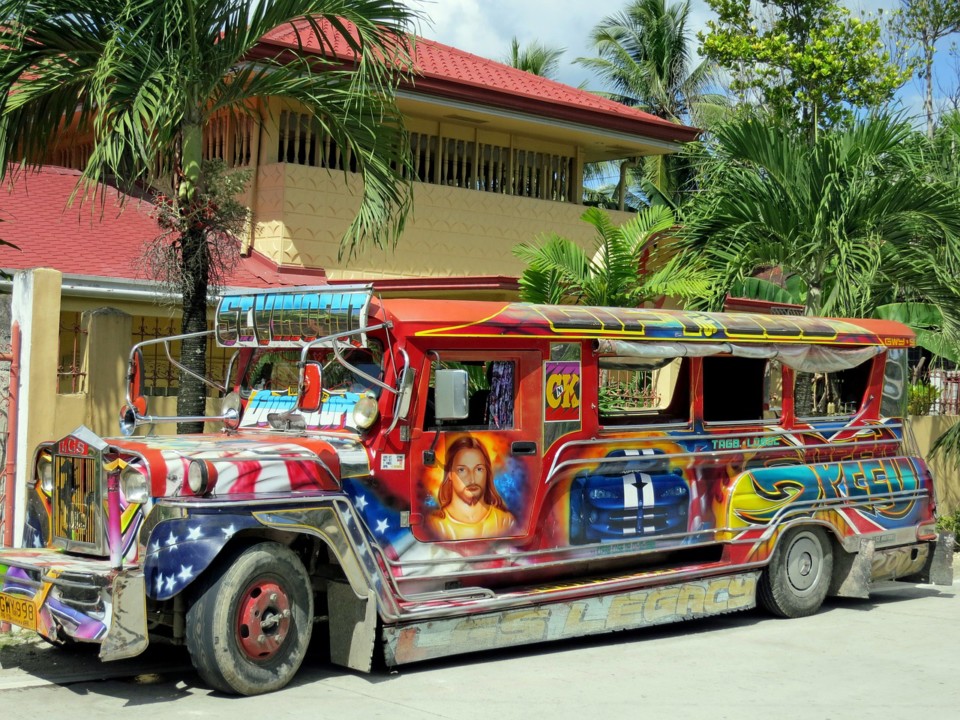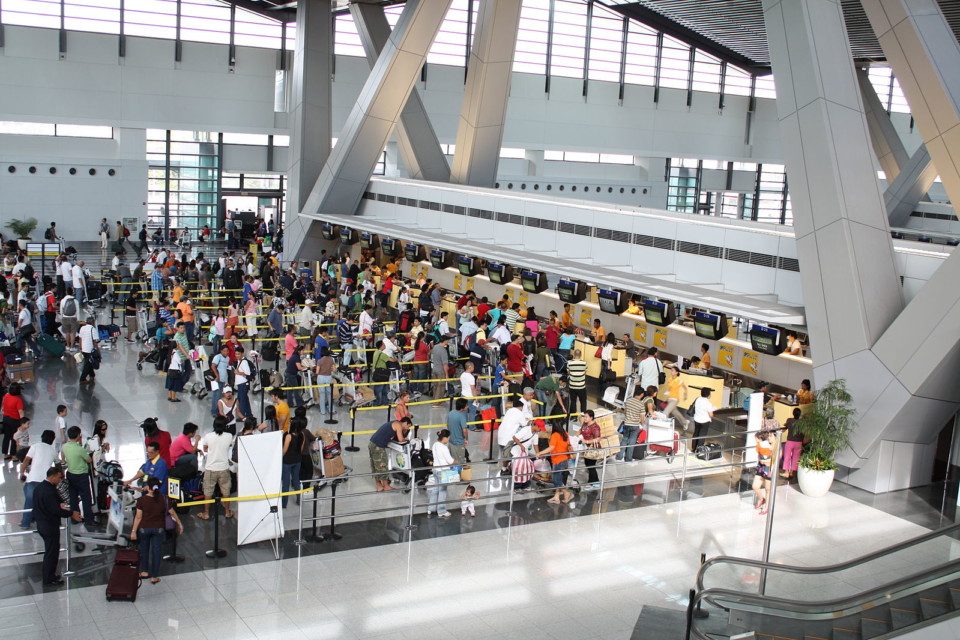A recent article by Dave Bramovich (here) suggested some infrastructure investments that could vastly improve life in the Philippines.
Among the generally costly proposals, was one suggestion that wouldn’t cost a penny. Discussing ways to improve the nation’s service providers, he wrote: “How is it possible to encourage a monopolistic cartel to provide a reliable service? The first step is to stop saying, “if you guys don’t sort yourselves out and fix this then I will allow competition”… instead, start allowing competition.”
The very next day, President Duterte did exactly that. Was it “the power of the press”? Or just “great minds” thinking alike? Who knows, but either way it inspired me to think of other free, or very inexpensive, ways that life in the Philippines could be improved for citizens and visitors.
Visas
I don’t want to get bogged down with Duterte’s churlish threats over issuing visas to US citizens, rather to suggest a new type of leave-to-remain that could bring millions of tourist dollars and investment into the country.
For want of a better name, I’ll call it the “winter visa”. Throughout the northern hemisphere and the southern reaches of the Antipodes there are millions of wealthy people who never want to shiver through another winter. So, why not offer six-month visas? With proof of assets or income provided, along with an upfront fee, I can’t see any downside for the Philippines.
As it stands, many of these cash-rich visitors are going to other more visa-friendly countries, as Mr Bramovich discusses here.
Of course, many people still manage to over-winter here, but have to put up with the stress and hassle of constant renewals. (Having said that, it’s not too much of an issue, as Reece Ferguson explains here. Also, what with places like Malaysian Borneo on our doorstep, making a cross-border visa run isn’t too much of a chore.)
But with the convenience of getting a single stamp guaranteeing the whole stay, how many more birds would fly south (or north) for winter?

Jeepneys
Given my way, I’d take these smoke-belching sweat boxes off the roads altogether. Maybe preserve some of the gaudiest examples at a new jeepney-themed tourist attraction (The Museum of Hellish Transport?) but the others should be repurposed for more appropriate uses, such as chick coops or punishment cells for the nation’s prisons.
However, I know that’s not going to happen (and I’d probably miss them once they were gone) so instead I’d like to lessen their impact on the nation’s traffic.
So often I’ve seen one of these vehicles stop to let someone on and then, within spitting distance, stop again to let somebody off. At each stop the traffic builds and builds behind them, lost in a smog of choking exhaust smoke.
My proposal would be to create designated jeepney stops, spaced at a distance of, say, 500 yards. These wouldn’t need to be solid structures, just an agreed colour painted on the kerbstones. Better still, the colours could be used to designate what routes the stop serves, in the same way that metro systems have colour-coded lines.
I’m sure there would be squeals of protest from people living half-way between stops, but anyone able to clamber into one of those machines can surely walk a few hundred yards.
Football/soccer
Let’s not beat about the bush: Filipinos aren’t the tallest people in the world. But they are tough, tenacious and agile — in other words, ideal footballer material. Arguably the world’s greatest player, Lionel Messi stands at only 5’7”, and that’s after years of pioneering growth treatment.
On the other hand, your typical Pinay really isn’t built for basketball. So why is it the nation’s number-one sport? I understand the limitations on space, and how a single basket can provide a sporting facility in the most cramped of barangays, but if an excuse were ever needed to create some much-needed open spaces in the nation’s cities, this surely must qualify?
As for cost, football is absolute catnip to corporate sponsors and local-boy-done-good philanthropists, so private money would almost certainly fund the infrastructure.
It’s also a matter of (much needed) national pride. Recently we reported how the national team, the Azkals, was thrashed 3-1 by North Korea — a “troubled” country of only 25 million. A week before that, they lost by the same margin to Bahrain, which is home to only a million.

Flights
Last year I visited Indonesia, and can confirm that it is, without doubt, More Fun in the Philippines. But one thing that the straggling archipelago of a country has, that’s lacking here, is a decent network of internal flights.
It’s possible to explore the whole country and see all the major sights without having to shuttle back and forth to Jakarta. Here, with a few exceptions, you constantly have to endure the hell of Manila’s NAIA.
(As we recently reported, there is already some movement on this issue with extra services coming to Clark)
Having a proper flight network linking the provinces would utterly transform tourism. Somebody would soon identify a “classic” route, call it something like “the golden rhombus” and the crowds would pour in. Low-spending backpackers at first, no doubt, but where they lead more well-heeled tourists always follow.
English
By regional standards, The Philippines has a pretty good level of English, which has been fundamental in attracting businesses such as call centres to the country.
Indeed, along with Tagalog, it’s one of the nation’s official languages. But with up to 175 different languages spoken in the country, why isn’t English the sole lingua franca? The only reason Tagalog shares the status, so far as I can see, is that it happens to be spoken in the Manila region.
Because the vast majority of the population live elsewhere and primarily speak their regional languages, most Tagalog ends up as a jumbled hybrid — indecipherable to any translation device, and hardly a national “gold standard”.
Getting all schools and government business conducted in English would not only drive up standards and attract investment but would also help to protect regional languages by putting them all on an equal footing.
Some would argue that this would diminish national identity, but I disagree. Wherever in the world English is spoken it has developed into unique variants. Speakers of Jamaican Patois, Ulster Scots and “Singlish” in Singapore are all immensely proud of their “unique” languages.
So why shouldn’t there be such a thing as vibrant, living language called “Pinglish”?
History
On the matter of education, I’ve noticed an incredible lack of knowledge about the nation’s history here.
Recently I visited Baguio and was intrigued to learn that it was the site of the final surrender of Japanese forces, so therefore the place where World War II — the bloodiest conflict in human history — officially ended.
I expected some sort of memorial to mark this, but I drew a blank. When I asked local people about it, they had no idea what I was talking about. Likewise the bombing of Manila, which flattened the city and killed 100,000, goes largely unremarked.
It could be argued that there’s no gain in harping on about the past, but a shared history is the glue that keeps a country together. And, as they say, if you’re ignorant of your history you’re destined to repeat it, a danger that was flagged up by Mr Bramovich in his most recent column here.
This ambivalence to history has, I think, been highlighted by the recent burial of Marcos. Was it an act of laying the past to rest, or evidence that the lessons of the past haven’t been learnt? The ongoing debate was investigated by Lana O’Sullivan here.

It’s More Fun in the Philippines
No! Just stop it! Don’t blow 650,000,000 pesos changing this slogan. Maybe it ain’t that great, but so what? France is the most visited country on earth, and doesn’t have a slogan at all.
What needs to change is the focus of the publicity. Yes, we get it, there are beaches, with coconut trees and hammocks in the Philippines. Oh, yes, and water. Lots and lots of water, full of fish and scuba divers.
But there’s so much more that’s largely ignored. The official brochures hardly mention the cool mountain regions, or the colonial towns, or the fast flowing rivers, or the traditional villages, or anything else. It’s always a picture of some sand, next to some water.
I understand that’s a major draw, but there’s so much more to celebrate. What about the nation’s amazing festivals? In Spain, the motherland of the fiesta, they make millions attracting visitors to their parties — whether running the bulls in Pamplona or throwing tomatoes in Bunol.
Why doesn’t the Philippines make more of it’s packed calendar of events, everything from the bonkers spectacle of the Lenten Rites, to the celebration of sisig being held in Angeles this weekend?
On that note, why not talk about the country’s regional specialities, from Empanadas in Ilocos Norte to the world’s best Lechon in Cebu? Or get people trekking in the mountains, or rafting on the rivers, or camping in the jungle villages?
There is so much more to do here than swing in a hammock while avoiding falling coconuts.
Barangay pride
With the barangay system, the Philippines has a resilient system of local organisation that many goverments would love to reproduce. But somehow it doesn’t translate into any meaningful form of civic pride.
I always find it odd when I drive under one of those large ostentatious archways proudly announcing my arrival in Barangay Santa Claus, or wherever, only to find I’m in an even grottier neighbourhood than the one I’ve just left. “Welcome to the neighbourhood, look at our lovely piles of trash!” they seem to say.
Surely there’s a way to channel this pride into a grassroots movement for self-improvement?
The UK has a scheme called Britain in Bloom, which encourages communities to beautify themselves with plants and flowers. Although there are no prizes, volunteers compete fiercely to win their neighbourhoods “gold” awards. It really works (particularly in middle-class areas with lots of ladies-who-lunch or poorer places with lots of petty criminals on community payback).
I really can’t see how a similar scheme couldn’t harness local identity at a barangay level to make a real visible difference across the nation.

Karaoke
Purely for selfish personal reasons, I’d like to see these infernal machines banned under pain of death. However, there are quite sensible reasons why they should be discouraged.
Look at any country in the world once ruled by the Spanish, and you will find incredible musical traditions. Argentina has its tango, Colombia salsa and Cuba just wouldn’t be Cuba without its music. It all translates into hard cash and soft power.
But what about here? The country is bursting with musical talent, but all anybody wants to do is wail along to Celine Dion or rehash 80s power ballads into forgettable Tagalog pap. There surely must be some wonderful regional musical traditions out in the provinces, but I’m yet to hear them — just endless bloody Beatles medleys.
So, for God’s sake Filipino people, get off the karaoke machine and ask your grandparents to teach you the old songs, before they’re lost forever!
